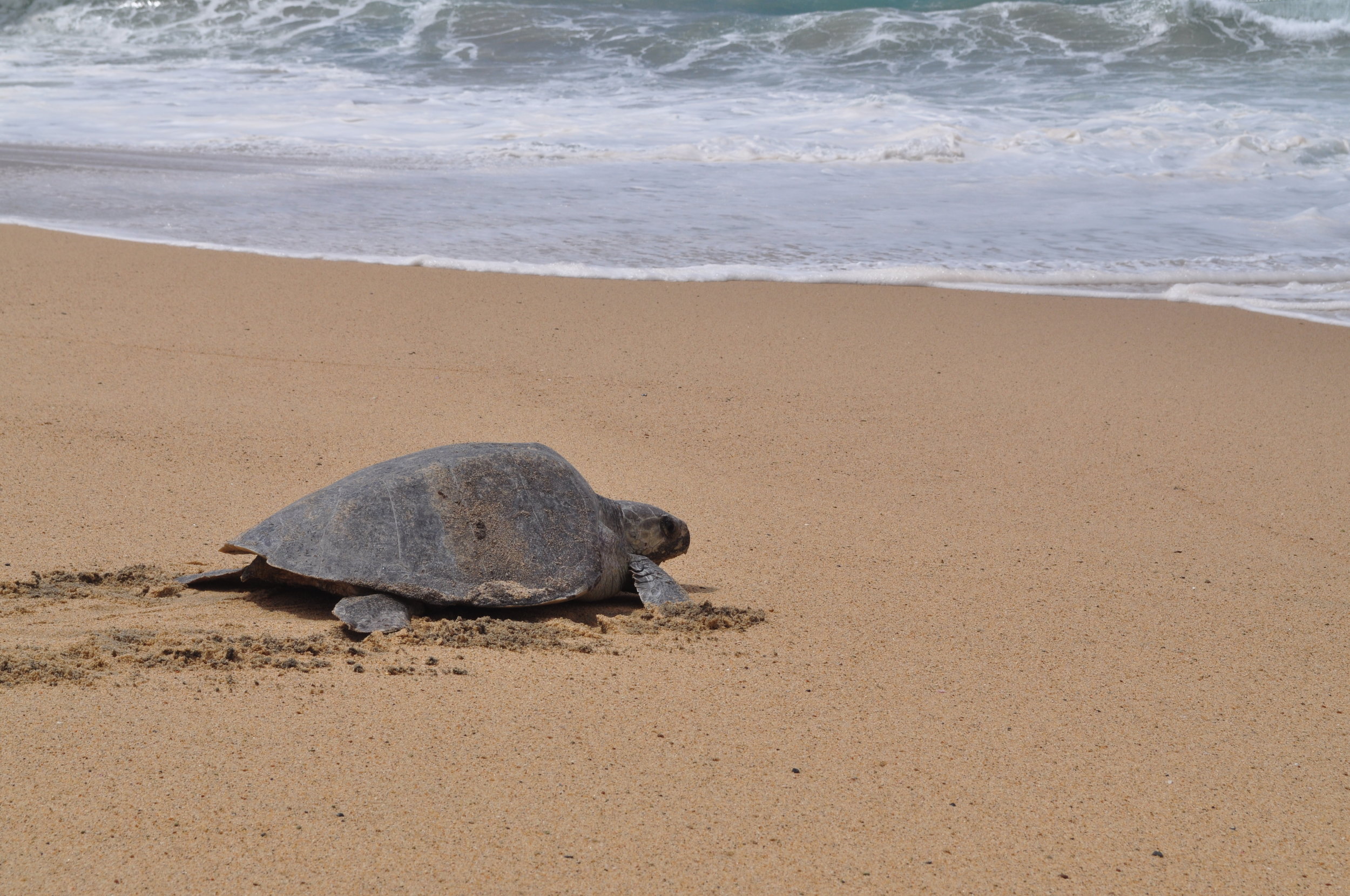Extreme Turtle Sex: The Exhausting Life of the Black Sea Turtle
“The turtles here do what we call ‘extreme sex’,” Carlos Delgado tells me with a wry smile. Responding to my raised eyebrows, he goes on to explain that the fornication happens near the intense wave breaks, often resulting in a rather dramatic coitus interruptus. Adding to the thrill of the danger is the (perhaps not surprising) behavior of the male turtles, who can outnumber the females five or six to one (no need here for Turtle Tinder). Carlos described the carnal embrace as we looked over the coast from a large rock at one end of the beach. I felt a twinge of voyeur’ s guilt as I leaned against a large cross at the top of the rock in my efforts to capture the act with my zoom lens.
The randy males fiercely compete with each other to join the party, to the point of actively (shamelessly?) working to disengage the large tails of the more successful competitors from their female partners. In their hormone-filled frenzy, males often mount each other (we’re not judging). It is, as our co-founder Dr. Wallace J. Nichols describes it in this article, “a bizzarely orgyastical circus of ancient oceanic sexuality.”
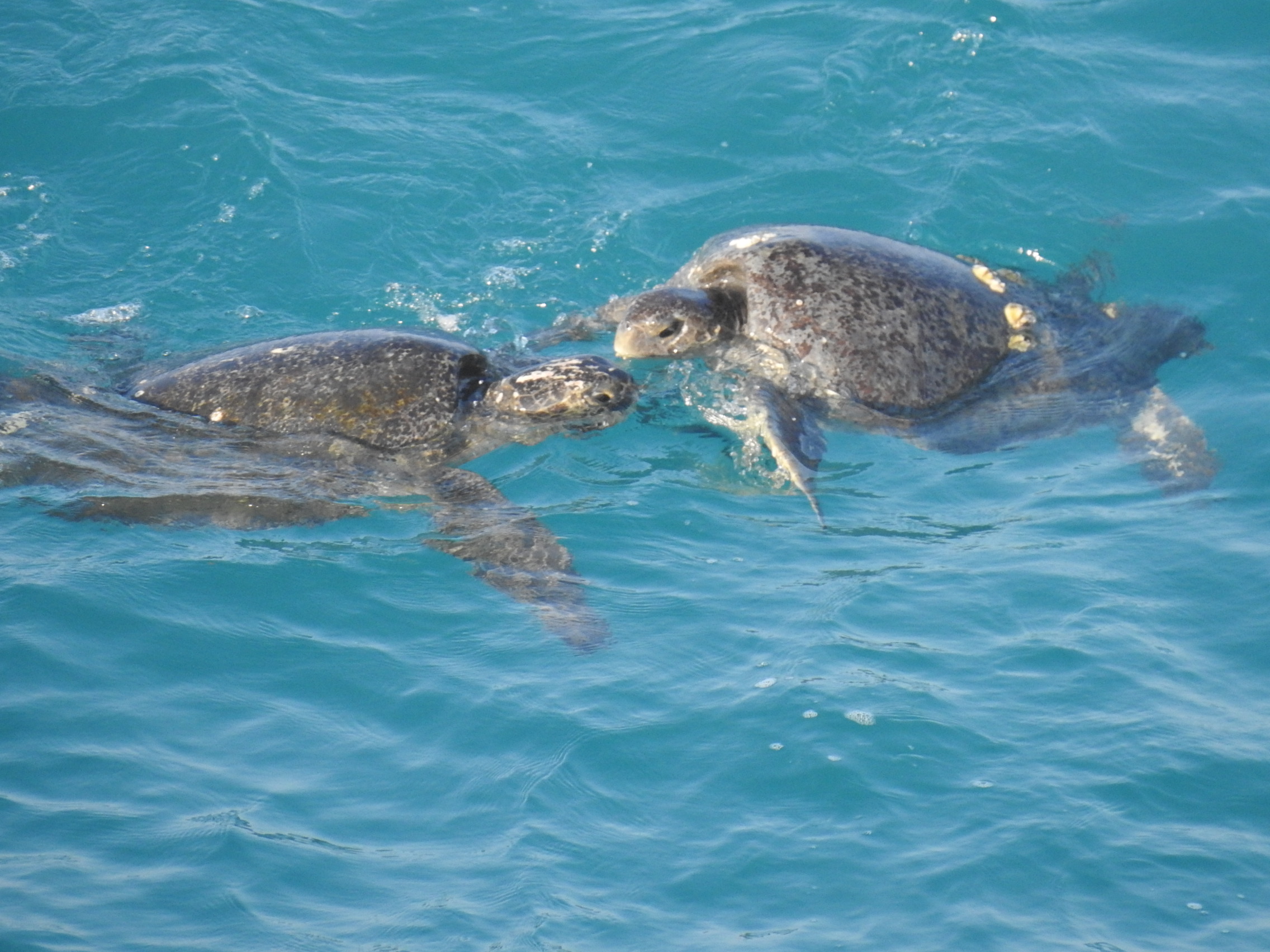
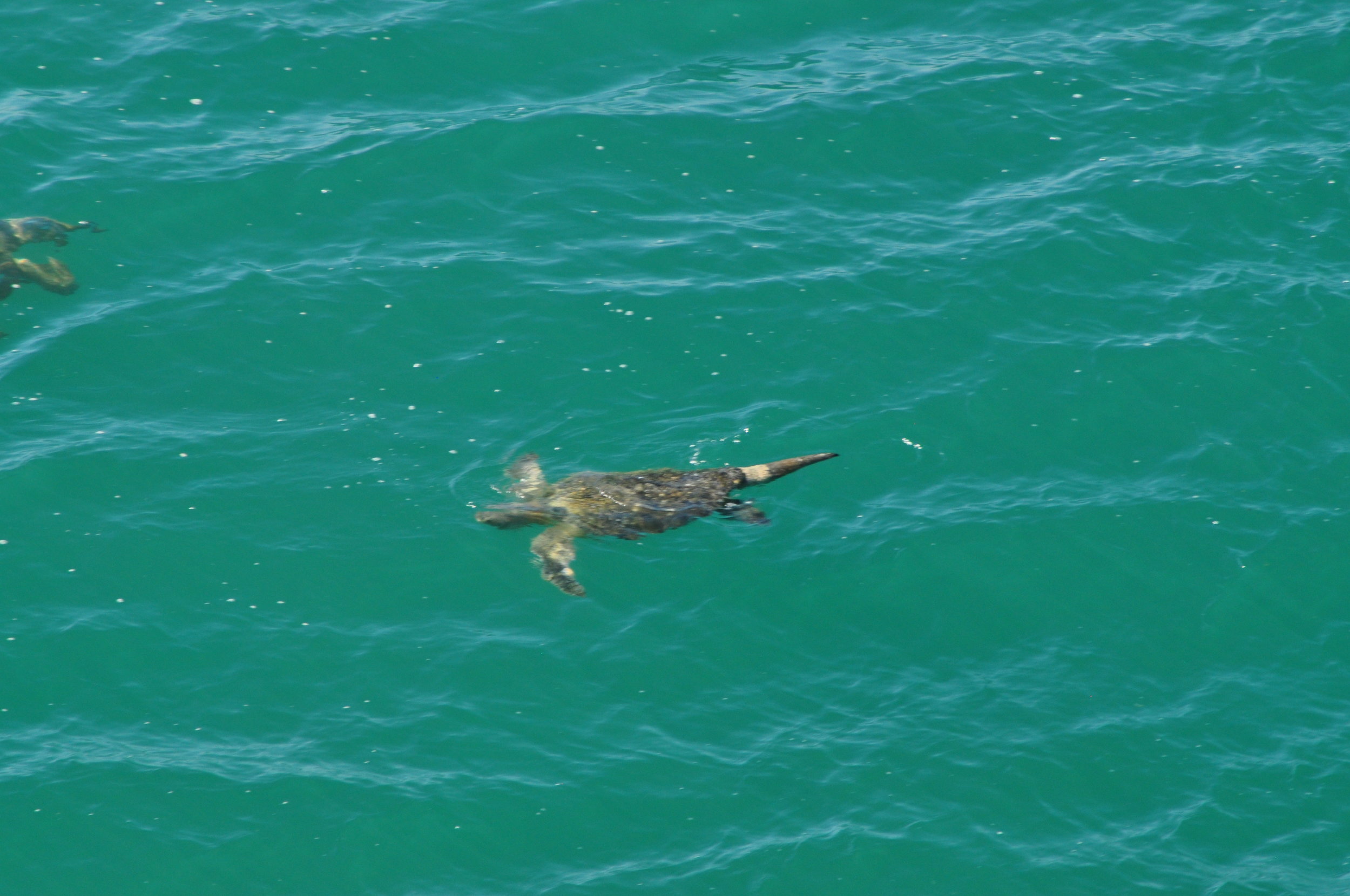
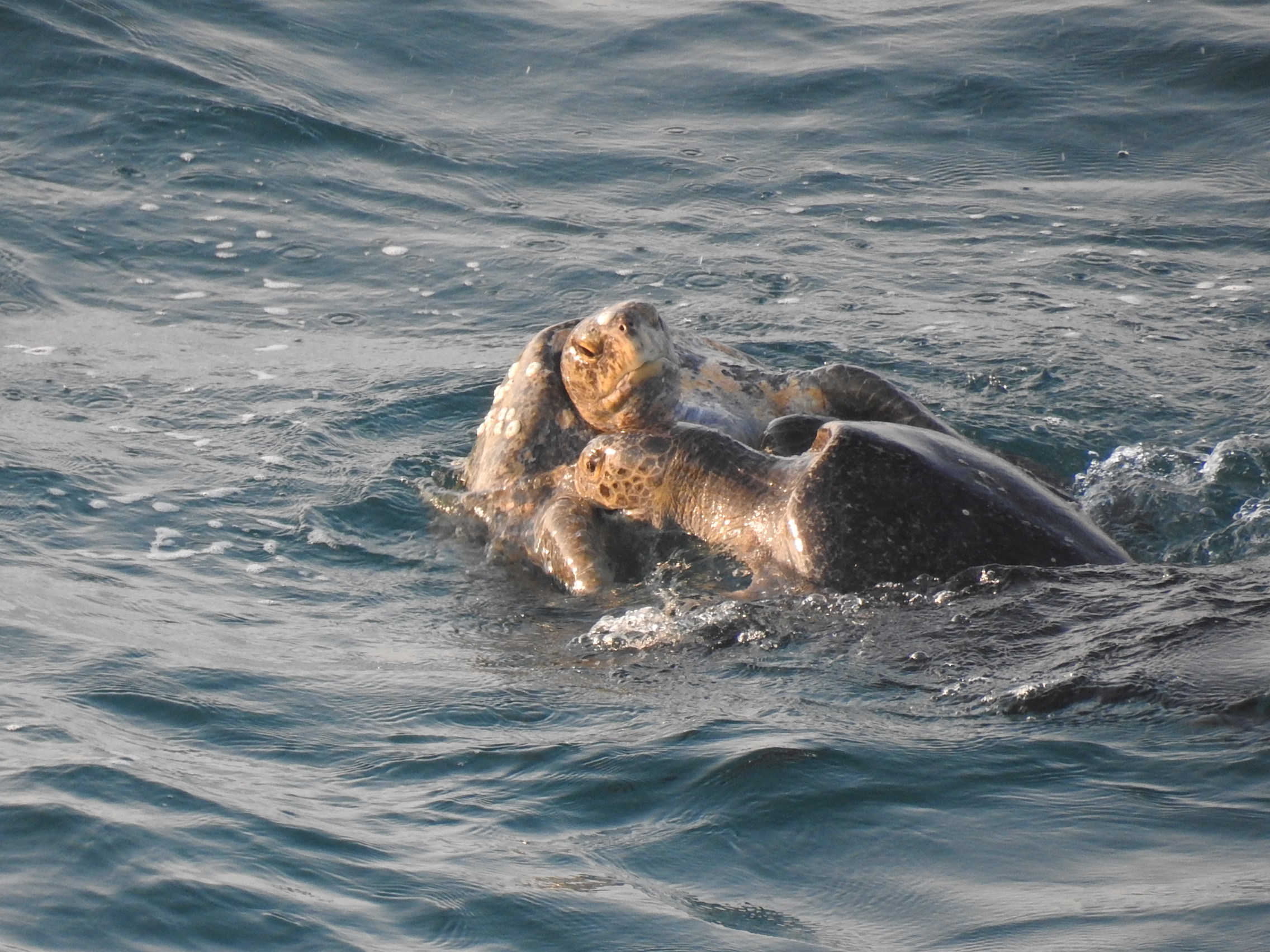

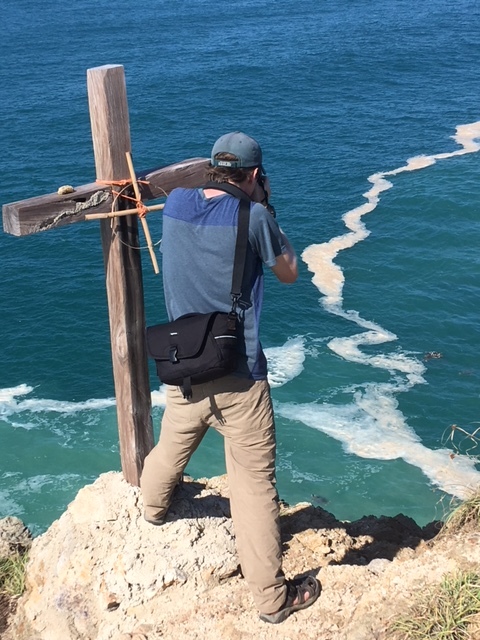
Carlos, a biologist with the University of Michoacan, has been researching the black sea turtle, considered by many experts (though perhaps not Carlos himself) as a sub-species of the green turtle. The work on the beach is led by members of the indigenous Nahua community, who take great pride in their contribution to this success story; the local kids patrol the beaches each evening during nesting season and bring the eggs to a hatchery where they are watched over until hatching roughly two months later.
Despite their lack of grace and propriety (and seemingly poor choice in location), these turtles seem to be pretty effective lovers. The recovery of this population is clearly one of the biggest success stories in the world of sea turtles (and perhaps all of wildlife conservation.) In the 60’s and 70’s, large number of eggs and turtles were consumed here. The conservation effort started at this beach in 1982 by Javier Alvarado Diaz and from a low of roughly 500 nests in 1988, 2017 was their best nesting season to date, with more than 30,000 nests (!) and 1.8 million hatchlings released, a growth of about 3,000 percent. Our Billion Baby Turtles program contributes to the extraordinary effort of the Nahua and University of Michoacan researchers; our funding since 2013 resulting in roughly 900,000 hatchlings being protected.
The inevitable result of all that sex (photo: Carlos Delgado)
The work on the beach is supported by work happening where these turtles feed and grow, off the coast of Baja California Sur, Mexico. The Grupo Tortuguero, a network of fishermen, scientists, community members, and others, have been working to study and protect these turtles for more than 20 years. Grupo Tortuguero works closely with RED Travel Mexico to promote alternative sources of income for coastal communities and fund research efforts. Travelers can participate in this research on our Baja Ocean Wildlife Expedition, run by RED in partnership with Grupo Tortuguero.
While on the way to Colola, Carlos, Omar (a geneticist working with Carlos), and I made a quick stop at Ixtapilla, an olive ridley “arribada” beach about 20 minutes north. If the black turtle was talented at reproduction, they can’t hold a candle to the olive ridley, who nest in the tens of thousands over a few days several times a year. I can’t imagine what their mating looks like but I’m sure it’s no prettier than the greens. Even in the middle of the day, in between arribadas, there were a few females finishing their nests and heading back to the sea. The beach was littered with fragments of old eggs, the hatchlings long having made their way to the water (or the stomachs of vultures).
Olive ridley at Ixtapilla
At the Colola research station, my hosts cooked up the largest red snapper I’ve ever seen, splitting the fish in half, covering it with a mix of tomato sauce and veggies including tomato, onion, and pepper, and grilling it over charcoal (a local specialty called “zarandeado”). It was as delicious as it sounds. Afterwards after dusk, we took a bunch of olive ridley hatchlings out to the beach for release. As they slowly made their way to the water, a young man came running down the beach, headed who knows where. Carlos was unable to stop his Godzilla-like rampage through the baby turtles, resulting in one being firmly planted several inches into the sand (though it seemed to be ok and continued its plod once pulled out of the footprint).
That night, we headed out by quad to look for nesting turtles. We quickly came across a set of tracks heading up the beach and checked to see what phase of nesting the turtle was in. The female was still looking for a spot to nest, so we hopped on the quad to cover the rest of the beach before heading back. The turtle by then had barely started to dig its body pit, deep enough to completely hide the turtle below the level of the surrounding beach.
As if the mating portion of their life cycle wasn’t exhausting enough, Carlos explained that the black turtle has an extremely long nesting process, taking an average of 3 and a half hours from exiting the water, to finding a spot, digging out the pit, digging the nest, depositing the eggs, camouflaging the spot, and heading back to the water (the longest of any sea turtle). They can go way up the beach (up to 150 meters / 500 feet), requiring an extraordinary amount of energy. They do this a couple of times a season, another testament to the unstoppable will of females of all species.
The extraordinary recovery of the black turtle is a source of pride for the residents and researchers that have spent decades working to get to this point. Their efforts recently resulted in winning a Champions Award from the International Sea Turtle Society, where photos from this beach stunned the largest gathering of sea turtle experts from around the world. This story was also covered in a fantastic photo essay by our good friend Neil Osborne in Orion Magazine.
Photo by Neil Ever Osborne for Orion Magazine
While this success story provides hope for other sea turtle nesting beaches, more extreme sex is needed to bring the black turtle back to historic levels. From an estimated 25,000 females nesting here before the decline in the 60’s and 70’s, the population is now back to roughly 10,000 nests. Even now after these impressive results, CONANP (the National Commission of Protected Areas) is proposing to cut the size of the sanctuary in half, which Carlos and his colleagues are working to prevent.
But even though there remains a way to go and challenges persist, the future of the black turtle looks bright, a welcome beacon of hope for these ancient reptiles.
Learn more:
Sea Turtles Get It On, And On… by our co-founder Dr. Wallace J. Nichols
Tortuga Rising: Photo essay of the black turtle by Neil Ever Osborne


